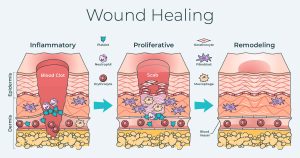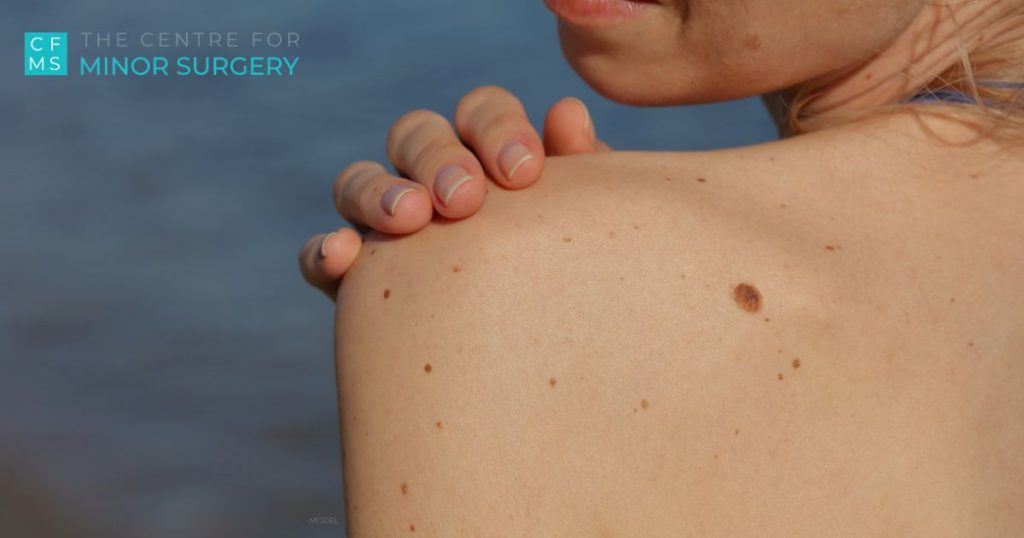Mole removal is a common procedure you may be considering to address cosmetic concerns or potential health risks. Knowing what to expect after the mole is removed, including the stages of mole removal healing, can help you feel more confident about the procedure.
Initial Healing
The first few days after mole removal are crucial for proper healing. During this time, you may experience:
- Redness and swelling around the treatment area
- Mild discomfort
- Formation of a scab over the wound
Keeping the area clean and following our wound care instructions during the first few days ensures the best possible results.
Scab Formation and Shedding
A scab forms over the treated area within a week or 2. It’s important not to pick at or scratch the scab, which naturally falls off and reveals new skin.
Skin Regeneration
As the scab falls off, you’ll notice pink or reddish skin in its place. This new skin is delicate and may be slightly raised. Over the next few weeks, it will gradually flatten and blend with the surrounding skin.
Final Healing
Complete healing typically takes 4 to 6 weeks, although you’ll notice the scar continues to fade for up to a year. During this time, the new skin will continue to strengthen and may change in appearance.

3 Stages of Mole Removal Healing
The healing timeline for mole removal wounds occurs in 3 stages:
Inflammatory Stage: Inflammation is at its peak. This stage begins about 12 hours after the procedure and lasts approximately 5 days.
Proliferation Stage: You’ll notice some overlap between the inflammatory phase and this stage, which begins about 24 hours after your surgery and lasts approximately 7 days.
Maturation (Remodeling) Stage: This is the longest phase of healing, lasting up to a year, as the wound completely heals.
Does Mole Removal Leave a Scar?
Scarring is a common concern for those considering mole removal. Any surgical procedure that involves cutting the skin can potentially leave a scar. Our surgical approach, however, is singularly focused on leaving the least noticeable scar possible, so we choose the best mole removal techniques for your needs and the mole’s features. The options include a shave excision or an excision with stitching.
Minimizing Scarring
You can minimize the appearance of a scar by carefully following our instructions, keeping the area protected from sun exposure, and using silicone-based scar treatments. Remember, every individual’s healing process is unique, and we encourage you to be patient, as the scar’s appearance can continue improving for a year or more. Learn more about mole removal aftercare in our previous blog post.
Request a Consultation
If you’d like to speak with a Royal College-certified plastic surgeon about mole removal treatment and estimated costs, call our Toronto office at (416) 663-9649. You can also request a consultation at The Centre for Minor Surgery using the online form.


Leave a Reply